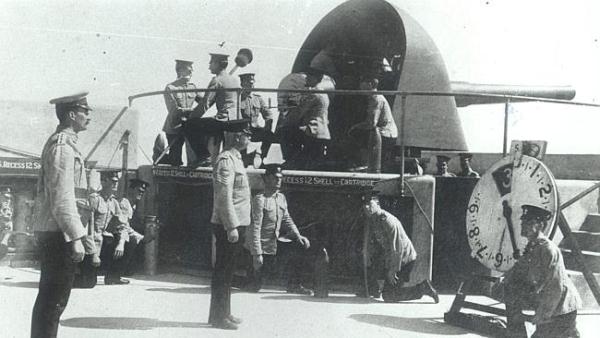By MELISSA MEEHAN
FORMER Montrose resident Major Charles Morris ordered the first shot of World War I to be fired from Point Nepean as a German steamer attempted to escape from Australian waters.
Today (Tuesday), exactly 100 years from the day the order was given, the Montrose community will honour this moment as it unveils a plaque in his honour.
The plaque was organised by the Rotary Club of Montrose in connection with the Centenary of Anzac.
Rotarian Carol Lawton said that an application for the funding towards the project was finally approved and was an official event on the centenary celebrations.
“It is important for us to recognise Major Charles Morris as he lived in Montrose from 1928,” Ms Lawton said.
“And he stayed here until he passed away in 1935.”
Major Morris was born in England in 1856 and moved to Victoria in 1885.
He enlisted to serve with permanent artillery batteries in Queensland, New South Wales and Victoria and was promoted to lieutenant and appointed fire commander at Fort Nepean.
On the morning of 5 August 1914, a German steamer, the Pfalz, attempted to escape being captured and tried to flee through Port Phillip Heads.
At noon, the then Lieutenant Morris received orders to stop the ship from going any further.
But it kept moving forward.
No official word had been reached as to whether any declaration of war had been made, so Lieutenant Morris asked for further authority to stop the ship.
Once permission was granted by the Minister of Defence at the time, Lieutenant Morris ordered a shot to be fired across the bow of the ship as a warning.
Soon after, the Pfalz surrendered.
That shot is now claimed to be the first shot fired by British forces in World War I.
It was also the only shot fired within Australian borders during the war.
He was later promoted to Major and served as the commanding officer on the 54th Siege Battery AIF on the Western Front during the war.
He was severely wounded in action in 1917 and sent home.
In 1928, he and his family moved to Browns Road, Montrose, and stayed there until his passing in 1935.







